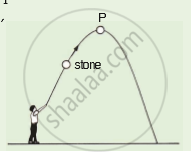Advertisements
Advertisements
Question
What do you understand by the term 'transformation of energy"? Explain with an example.
Solution
The change of one form of energy into another form is known as transformation of energy. This process helps us to convert one form of energy into a more desirable form of energy.
Example - Energy transformation at a hydroelectric power plant
At a hydroelectric power station, a dam is built on a river. Water collected in the reservoir has lots of potential energy. The potential energy of the water gets converted into kinetic energy as it begins to fall down. The kinetic energy of falling water is used to drive huge turbines, which are connected to the electric generator.
APPEARS IN
RELATED QUESTIONS
State whether the object possess kinetic energy, potential energy, or both :
A bird running on the ground ____________.
What kind of energy is possessed by the following?
A stone kept on roof-top _______________
Fill in the blank with suitable word :
The sum of the potential and kinetic energies of a body is called __________ energy.
Give two examples where a body possesses both, kinetic energy as well as potential energy.
A stone is thrown upwards as shown in the diagram. When it reaches P, which of the following has the greatest value of the stone?
Name the device or machine which convert :
Chemical energy into electrical energy.
Explain the transformation of energy in the following cases :
(i) A ball thrown upwards.
(ii) A stone dropped from the roof of a building.
Name the energy transfers which occur when :
someone speaks into a microphone
Which one of the following is not the unit of energy?
An automobile engine propels a 1000 kg car (A) along a levelled road at a speed of 36 km h–1. Find the power if the opposing frictional force is 100 N. Now, suppose after travelling a distance of 200 m, this car collides with another stationary car (B) of the same mass and comes to rest. Let its engine also stop at the same time. Now the car (B) starts moving on the same level road without getting its engine started. Find the speed of the car (B) just after the collision.
